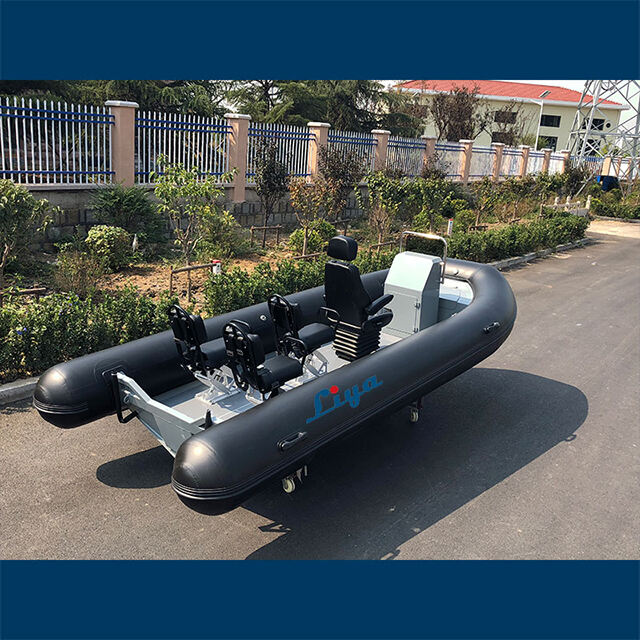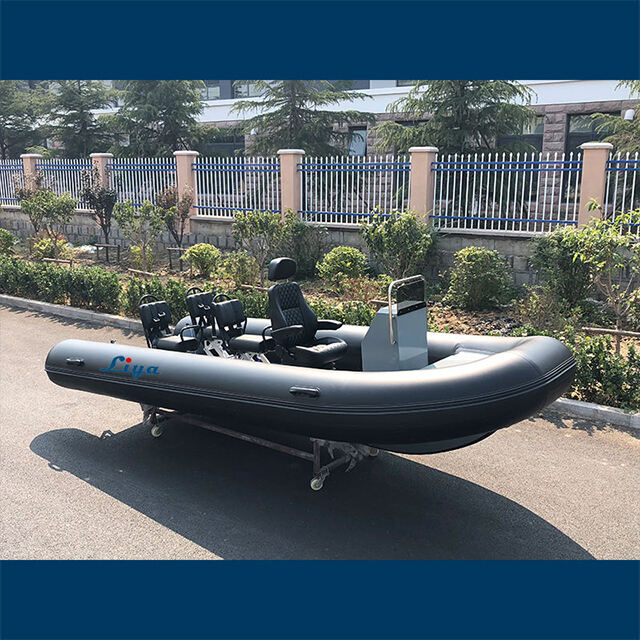Karakteristik Utama Kapal Penegak Hukum Maritim Modern
Penegakan hukum maritim memerlukan kapal khusus yang mampu mengatasi berbagai tantangan sambil mempertahankan kinerja optimal. Kapal polisi mewakili fondasi penegakan hukum berbasis air, menggabungkan teknologi canggih dengan ketahanan tinggi untuk memastikan keberhasilan operasi dalam berbagai kondisi. Kapal-kapal ini berfungsi sebagai pusat komando bergerak, platform penyelamatan, dan unit respons cepat, sehingga keandalannya sangat penting bagi lembaga penegak hukum di seluruh dunia.
Kapal polisi modern menggabungkan berbagai fitur inovatif yang meningkatkan kemampuan operasional, mulai dari sistem navigasi canggih hingga peralatan keselamatan khusus. Kapal-kapal ini harus mampu tampil konsisten dalam segala situasi, dari patroli rutin hingga keadaan darurat yang penuh tekanan, sehingga desain dan konstruksinya menjadi faktor fundamental bagi keberhasilan penegakan hukum di perairan.
Desain Lambung dan Bahan Konstruksi
Konfigurasi Lambung Canggih
Desain lambung kapal polisi memainkan peran penting dalam kinerja dan keandalan secara keseluruhan. Lambung Deep-V memberikan stabilitas yang sangat baik serta kemampuan memotong gelombang, yang penting untuk mempertahankan kecepatan di perairan bergelombang. Sejumlah kapal dilengkapi lambung berjenjang yang mengurangi hambatan air dan meningkatkan efisiensi bahan bakar, sementara yang lain menggunakan desain lambung cathedral untuk stabilitas yang lebih baik selama operasi diam di tempat.
Kapal polisi modern sering mengadopsi desain lambung hibrida yang menggabungkan berbagai fitur menguntungkan. Konfigurasi inovatif ini memungkinkan kapal meluncur dengan cepat, menjaga stabilitas pada kecepatan tinggi, serta beroperasi secara efektif dalam berbagai kondisi perairan. Pemilihan desain lambung tertentu bergantung pada lingkungan operasional utama dan persyaratan misi.
Bahan Konstruksi Unggulan
Kapal polisi saat ini menggunakan material mutakhir yang menjamin daya tahan dan umur panjang. Aluminium kelas maritim tetap menjadi pilihan populer karena rasio kekuatan terhadap berat yang sangat baik, ketahanan terhadap korosi, serta kebutuhan perawatan yang minimal. Beberapa kapal menggunakan material komposit seperti plastik diperkuat serat (FRP) atau serat karbon, yang menawarkan ketahanan benturan lebih baik dan bobot yang lebih ringan.
Pemilihan bahan konstruksi sangat memengaruhi karakteristik kinerja kapal. Bahan ringan membantu meningkatkan efisiensi bahan bakar dan kecepatan, sedangkan konstruksi yang kuat memastikan kapal mampu bertahan dari penggunaan terus-menerus dalam kondisi sulit. Banyak kapal polisi modern menggabungkan berbagai bahan secara strategis untuk mengoptimalkan kinerja dan daya tahan.

Sistem Propulsi dan Navigasi
Teknologi Mesin Lanjutan
Sistem propulsi yang andal merupakan fondasi utama operasi kapal polisi yang efektif. Kapal modern umumnya dilengkapi dengan beberapa mesin tempel atau konfigurasi inboard/outboard, memberikan redundansi dan menjaga kemampuan operasional bahkan jika satu mesin mengalami kegagalan. Mesin berperforma tinggi menyediakan tenaga yang dibutuhkan untuk akselerasi cepat dan pengejaran berkecepatan tinggi, sekaligus mengintegrasikan teknologi hemat bahan bakar.
Sistem manajemen mesin elektronik memantau parameter kinerja secara real-time, memungkinkan operator mengoptimalkan konsumsi bahan bakar dan mendeteksi potensi masalah sebelum menjadi kritis. Kemampuan diagnostik canggih membantu menjaga kinerja pada level puncak serta mengurangi waktu henti perawatan, memastikan kapal tetap siap dikerahkan.
Peralatan Navigasi Canggih
Kapal polisi dilengkapi sistem navigasi komprehensif yang memungkinkan operasi presisi dalam segala kondisi. Tampilan multifungsi mengintegrasikan radar, GPS, pengukur kedalaman, dan peta elektronik ke dalam antarmuka yang mudah digunakan. Kemampuan penglihatan malam hari dan sistem pencitraan termal memperluas efektivitas operasional ke dalam kegelapan dan kondisi cuaca buruk.
Kapal modern juga dilengkapi sistem autopilot canggih dengan kemampuan posisi dinamis, memungkinkan kapal untuk mempertahankan posisi secara otomatis selama operasi pengawasan atau penyelamatan. Integrasi dengan perangkat seluler dan pusat komando memungkinkan berbagi informasi secara waktu nyata serta upaya respons terkoordinasi.
Fitur Keselamatan dan Penyelamatan
Peralatan Tanggap Darurat
Kapal polisi dilengkapi peralatan keselamatan dan penyelamatan yang lengkap untuk menghadapi berbagai situasi darurat. Rakit penyelamat yang dapat dikerahkan dengan cepat, platform penyelamatan, dan derek pemulihan memungkinkan operasi penyelamatan di air yang efisien. Banyak kapal dilengkapi sistem pemadam kebakaran bawaan dan pompa pengering darurat untuk menangani keadaan darurat pada kapal.
Area penyimpanan peralatan medis khusus dan ruang perawatan memungkinkan penanganan segera terhadap korban cedera selama operasi penyelamatan. Penempatan strategis peralatan keselamatan memastikan akses cepat dalam situasi kritis, sementara sistem redundansi menyediakan opsi cadangan jika sistem utama gagal.
Sistem Perlindungan Kru
Kapal polisi modern dilengkapi berbagai fitur untuk melindungi anggota kru selama operasi. Kursi peredam kejut mengurangi gaya benturan di perairan bergelombang, sementara kabin tertutup memberikan perlindungan dari cuaca. Permukaan dek anti-selip dan pegangan tangan yang ditempatkan secara strategis meningkatkan keselamatan kru saat bergerak di sekitar kapal.
Sistem komunikasi canggih memastikan kontak yang andal dengan kapal lain dan fasilitas darat, sementara pelampung radio penanda posisi darurat (EPIRB) menyediakan data lokasi dalam skenario terburuk. Fitur keselamatan ini bekerja bersama untuk melindungi personel penegak hukum sekaligus memungkinkan mereka menjalankan tugas secara efektif.
Pertanyaan yang Sering Diajukan
Apa yang membedakan kapal polisi dengan kapal biasa?
Kapal polisi dilengkapi dengan peralatan khusus, daya tahan yang ditingkatkan, dan elemen desain tertentu yang mendukung operasi penegakan hukum. Termasuk di antaranya lambung yang diperkuat, sistem navigasi canggih, peralatan respons darurat, serta sistem komunikasi khusus yang biasanya tidak ditemukan pada kapal sipil.
Berapa lama umumnya kapal polisi tetap beroperasi?
Dengan perawatan yang tepat, kapal polisi dapat tetap beroperasi selama 15-20 tahun. Namun, masa pakai aktual tergantung pada faktor-faktor seperti pola penggunaan, lingkungan operasi, praktik perawatan, dan kebutuhan akan kemajuan teknologi.
Jenis pelatihan apa yang dibutuhkan oleh operator kapal polisi?
Operator kapal polisi harus menyelesaikan pelatihan intensif yang mencakup prosedur penegakan hukum maritim, pengoperasian kapal, navigasi, respons darurat, serta teknik penyelamatan di air. Mereka juga harus mempertahankan berbagai sertifikasi dan mengikuti pelatihan penyegaran secara berkala untuk memastikan kesiapan operasional.

